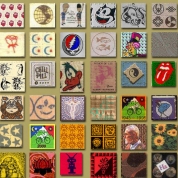LSD

Pharmacology
After being taken, LSD (lysergic acid diethylamide) molecules are detected in the central nervous system (CNS) by a large group of receptors that span cell membranes. These receptors (called G-protein coupled receptors or GPCRs) have many sub-types including those for the neurotransmitters dopamine (involved in reward-seeking behaviour) and serotonin (involved in the regulation mood, appetite, sleep and memory). They recognise, and are stimulated by LSD molecules when they are in the body but outside cells then activate responses within cells that give rise to LSD’s pharmacological effects.
In common with other psychedelic/ hallucinogenic drugs, LSD binds to many receptors for the neurotransmitter serotonin receptors but not strongly enough to induce significant pharmacological effects at typical recreational doses. An exception to this is the serotonin 2A receptor (also known as the 5-HT2A receptor), which is known to induce hallucinogenic effects when stimulated by psychedelic/ hallucinogenic drugs (or agonists) such as LSD. Drugs that stimulate pharmacological effects after binding to receptors are called ‘agonists’.
Although LSD binds tightly to the serotonin 2A receptor, the maximum pharmacological effect it causes is lower than that for other similar drugs and once that maximum is reached, further stimulation of these receptors is blocked. For this reason, LSD is described as a ‘strong partial agonist’ at the serotonin 2A receptor.
In contrast with other psychedelic/ hallucinogenic drugs that bind to serotonin receptors, LSD also binds to, and stimulates many dopamine receptors. This binding is thought to stimulate some of the non-hallucinogenic effects of LSD.
